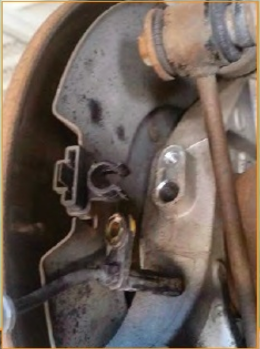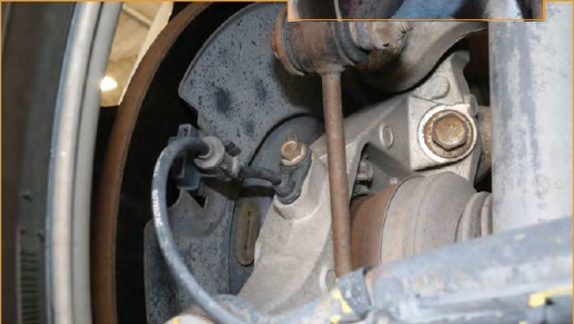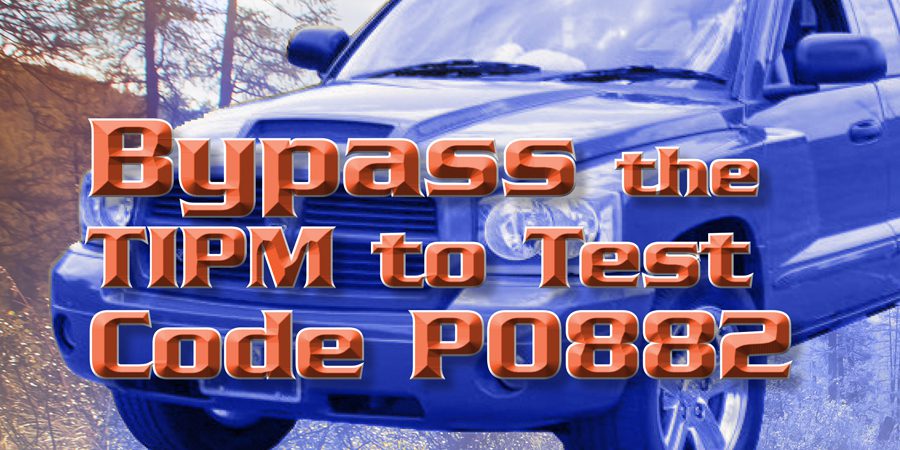We have a shop in Michigan where we work on just about anything. We keep up with training and try to learn as much as possible about newer vehicles and testing. Sometimes it doesn’t matter what you do; sometimes the factory dupes you without trying.
Here’s what happened: A shop we work with brought us a 2007 Dodge Charger. It came in “not shifting right.” There were no transmission codes in memory, but there was a code for a wheel speed sensor in the ABS computer.
I test drove the vehicle with the scan tool connected and proved the commands from TCM were inconsistent and erratic. Still no codes except for an ABS code — something about no signal from the rear wheel speed sensor.

We inspected the rear speed sensor and found it disconnected. We connected the sensor, cleared the code, and drove it again. Almost immediately the transmission computer set code P0731 — incorrect gear ratio. Because Dodge doesn’t use an output speed sensor on the transmission, the transmission computer calculates output speed from the wheel speed sensor signal, and uses that and the N2 and N3 sensor signals to determine ratio. Since the ABS is the primary module for the wheel speed sensor, that code needed to be fixed first.
We decided to check the PIDs using the scan tool: The PIDs Dynamic Engine Intervention and Reduction Request Engine Intervene were being activated during a shift attempt, followed by failsafe.
The fluid was full and clean and there were no bulletins pointing to this condition. We decided to send the vehicle back to the original shop and have them reprogram the TCM or other modules and reset the parameters.
Unfortunately there were no reflashes available and all seemed right with the modules. Here is where the true story begins. We have a code P0731; all diagnostic routes say its one of four possibilities:
- Pinion factor isn’t set properly
- Low transmission fluid
- Other transmission DTCs present
- Internal transmission failure
I called the other shop and asked if they had reset or confirmed the Pinion Factor; they did. I already checked the fluid level and it was clean. There were no other DTCs, so that only left an internal transmission failure.
We’ve all seen these ratio codes caused by internal parts; a torque converter is the most common. I found it interesting that it only set it in first gear and after moving just a couple feet.

I cleared the code and used the paddle shifter to see if the code would come back. Not only did it come back, but it tripped a ratio code in all five gears! Knowing the code now happens in all gears gave me an edge in this problem. It had to be a gearing problem in the transmission or a problem in the rear end: either tires or differential.
I thought I knew what the pinion factor term was, I mean it goes back to the late 1980’s. But it wasn’t until I dug deeper to find out how it’s used with the 722.6.
Originally the TCM would calculate vehicle speed by using the output speed sensor and then calculating in “pinion factor” which was the final drive ratio and tire size to simulate the old speed sensor signal.
With the early CCD and PCI bus systems, we still needed a hardwired speed sensor signal to the PCM in order to accurately maintain the speed control. The Speedometer in the cluster could rely on a slower bussed message. Later models when CAN bus was introduced, this was fast enough to rely on a bus message for both speed control and speedometer operation (along with any other modules that needed to know MPH).
Once we had a fast enough bus circuit, we could eliminate the hard wire circuit and that was about the time that ABS became standard equipment so we could convert everything over to using the ABS wheel speed sensors for all vehicle speed signals. The ABS module bussed the message to the other controllers over CAN C. ABS module only needs to know tire size to calculate MPH.
Where a new twist was added was with the Mercedes 722 where this transmission has no output speed sensor signal, so it now works in the other direction where if we know axle ratio and tire size, we can calculate output shaft speed which the TCM needs.
So for a ratio error, the TCM knows input speed from N1 & N2 speed sensors and is bussed the MPH reading and calculates output speed comparing this to a known parameter. When the value exceeds that parameter, then the TCM will set a gear ratio error. Assuming it’s getting a correct MPH reading, this would typically indicate something is slipping in the transmission.
So with most CAN bus vehicles, the gear ratio is based on build configuration and sales codes programmed into the gateway module (usually the TIPM or BCM). Tire size is still programmable with a scan tool on many vehicles, but to change gear ratio would require a sales code change.
As long as it’s a factory available tire size or axle ratio that we certified and sold the vehicle with, then you can program a different tire size via our scan tool. Changing sales codes for axle ratios is more difficult and typically not recommended.
Pro-Cal and some of the after-market companies do make modules or software to do this, but they usually get around the legal side with a disclaimer that this is for off road use only.
Now that I had an understanding of how the Pinion Factor worked I looked into how the code sets. It uses five modules to make this transmission shift correctly and all five must match inputs and outputs. The TCM (Transmission Control Module), ECM (Engine Control Module), ABS (Anti-Lock Brake System), FCM (Front Control Module) and ESM (Electronic Shifter Module) are all directly relative to transmission operation.
The Transmission Control Module (TCM) constantly calculates the transmission ratio based on the input speed sensor 1 and 2 (N2-N3) signals and the calculated output shaft speed. This lets the TCM determine whether the transmission is slipping or an invalid gear ratio is present.
The TCM monitors all ratio codes when the engine is above 450 RPM, there are no N2 or N3 input speed sensor errors, no gear selector lever errors, no ABS system errors, and vehicle speed is above 10 kM/h (6 MPH).
Here are the conditions that will set this code:
- No shifts and actual gear isn’t the target gear.
- No shifts; actual (calculated) gear is less than target (expected) gear, no plausible gear is calculated, actual (calculated) turbine speed is greater than 300 RPM, or calculated transmission ratio is above threshold.
- During an upshift, actual (calculated) gear is less than target (expected) gear.
- During a downshift, actual (calculated) gear is greater than target (expected) gear.
This just didn’t seem right. Something was wrong but I couldn’t put my figure on it until the test drive with the paddle shifter. If this were only a 1st gear problem, it should only have set one code.
I located the Pinion Factor reset with my scan tool. Tire size and pinion factor programming is done through the TIPM/FCM (Totally Integrated Power Module/Forward Control Module). There’s a setting on the factory scan tool under Miscellaneous.
If you’re changing axle ratio it gets more complicated. It may require a sales code change if the axle ratio isn’t listed on the scan tool, and then restore vehicle configuration with the scan tool. As long as you maintained the stock axle ratio, you should be fine with the new differential; you’ll just need to verify the tire size.
The 722.6 transmission uses vehicle speed for output speed, so if tire size or axle ratio is incorrect, the computer may set P0731. I called my buddy’s shop and they called the customer: Turns out the car had been in a rear-end collision. When I heard that I decided to run the VIN though the dealer to see exactly what it was supposed to have.
The dealer information came back for a 2007 Dodge Challenger, 3.5L, W5A580 (NAG1/722.6), 2.64 differential and P215/65R17 tires. First thing I did was check the motor and transmission. Then I checked the tire size and the differential. Found it!
The differential was a 3.64 ratio, which belongs with the 5.7L; not the 3.5L. We had the differential changed out and the problem was solved.
There would have been no way of knowing about the differential problem if I hadn’t learned that the vehicle was in an accident. Think about it: If this vehicle came into your shop with this code and you reset the pinion factor for the proper tire size, and reflashed the TCM to the right VIN, and still had the ratio code, you’d probably have gone into the transmission. From there it would have been a wild goose chase.
I hope this helps someone else who runs into a similar problem: Make sure you have the correct parts on the vehicle. You better believe I’ll be doing that from now on!
Michael Gutierrez started his career in 1994 as a mechanic at Tuffy. He then moved to a Chevrolet dealership, which started his path to specializing in transmissions. From there he was hired at Pine & 17th Transmissions in Holland Michigan and has been diagnosing and rebuilding there for the last 22 years.















